
Serving as the first “entry-level” contender to enter the ring in this generation, the Nvidia GeForce RTX 5060 Ti is a tougher sell than you’d think. It should technically be the GPU suited to most players since it packs a respectable punch at 1080p and can stretch to even 4K with a bit of DLSS assistance. My concern with this particular graphics card is that it’ll potentially end up with both its cheaper siblings and rivals in its price range, which in turn could lead to it being a tertiary option.
The very nature of the Nvidia GeForce RTX 5060 Ti 16GB means it already has a tough fight ahead in the best graphics card pit. Don’t get me wrong, it’ll fare better than its 8GB counterpart since its choice of VRAM configuration is going to irk enthusiasts and shoppers making comparisons. But, if you fully believe that GPUs should boast double the memory as a minimum, you’re going to pay at least $429 for the pleasure, and that MSRP only applies if you grab a vanilla variant.
Before you ask, there is no Nvidia GeForce RTX 5060 Ti Founders Edition, so if you want the 16GB card, you’ll be looking at custom models. I’ve been testing the Palit Infinity version for this review that should stick to the green team’s MSRP, but if you’ve ever tried to shop for a new GPU over the past five years, you’ll know that recommended retail prices are never guaranteed. I’d keep that fact to hand as I talk about both this card and any other in 2025, as even if a model comes out swinging, it could end up being bludgeoned by availability and pricing blows.
Specs
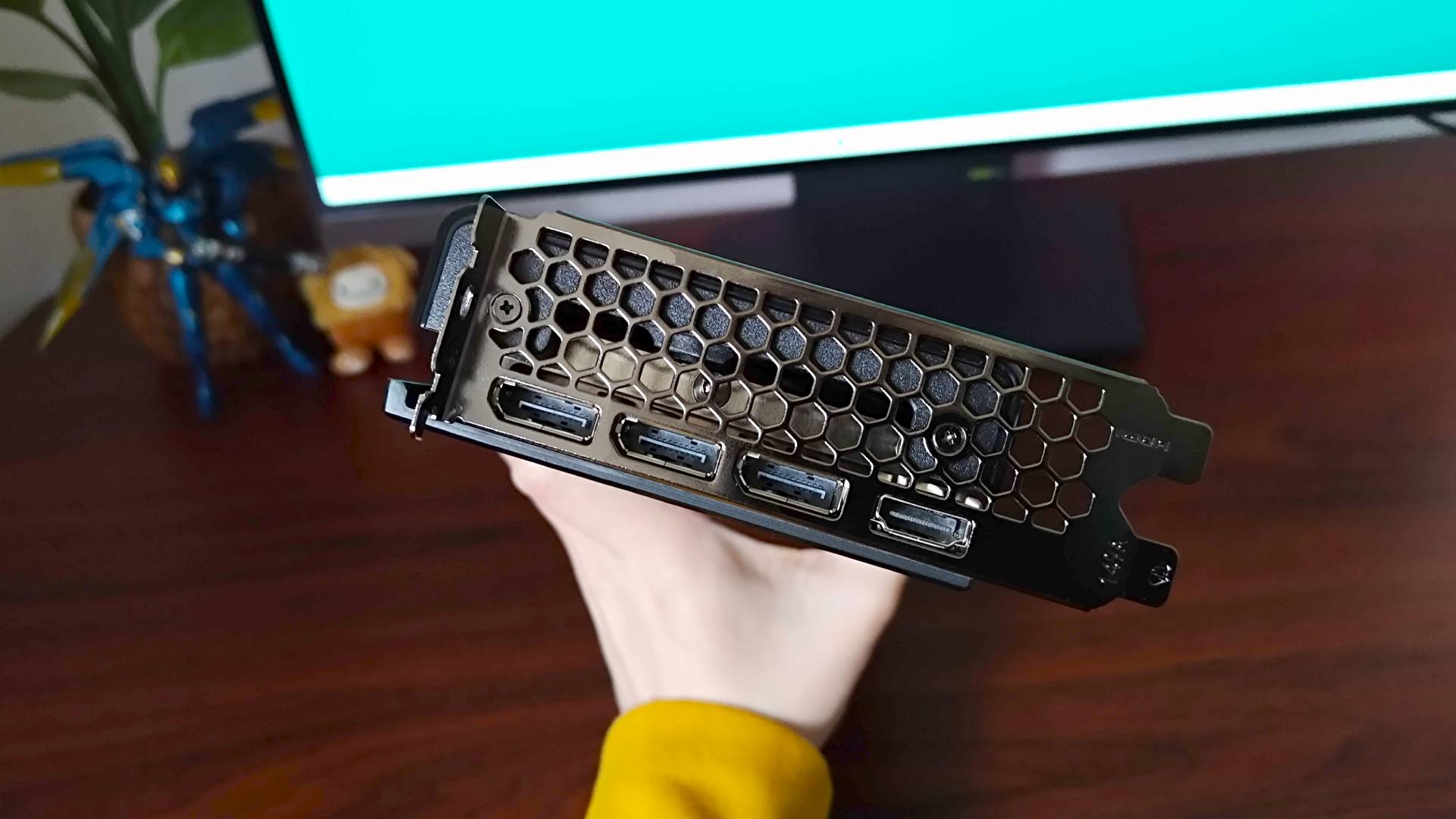
It’s getting harder to call 60-class GPUs like the RTX 5060 Ti entry-level, but unless Nvidia eventually releases a 50-class Blackwell segment for desktop, it’s one of the lowest spec cards of the generation. Armed with a GB206 chip, this specific model scales things back with 4,608 CUDA cores, 144 Tensor, and 36 ray tracing units, so a significant drop from what the RTX 5070 is packing.
Case: Corsair iCue 5000T
CPU: Intel Core i9-13900K
Cooler: Corsair iCUE H170i ELITE LCD XT
RAM: Corsair Vengeance 32GB DDR4
SSD: WD_BLACK SN850 1TB
PSU: MSI MPG A1000G 1,000W
The important thing to keep in mind is that 60-class GPUs are usually billed as 1080p or 1440p models. The assumption is that you won’t be doing any heavy UHD gaming on the RTX 5060 Ti, even though Nvidia has somewhat switched up its messaging compared to the 40-series and doesn’t use specific resolutions as a selling point. That doesn’t mean playing games at 4K is off the table, but you’ll be relying more on AI upscaling techniques like DLSS 4 than ever.
VRAM is normally a sore spot for 60-class cards, which is exactly why there’s a 16GB version of the RTX 5060 Ti in the first place. It’s widely argued that even the cheapest graphics cards should be rocking more than 8GB since new releases munch more memory than ever, but your mileage will fully depend on specific game optimizations and your resolution of choice.
I’d certainly prefer it if the bar started at 12GB since that would provide some wiggle room for future shenanigans and line up with RTX 5070 specs. Nvidia has instead elected to provide a 16GB model, and it is using faster GDDR7 modules like the rest of the Blackwell range. I reckon the green team could have appeased most players by arming the 70-series model with 16GB and reserving the 12GB setup for a single 5060 Ti version, but perhaps that’s in the green team’s mid-generation refresh plan.
As for power, the RTX 5060 Ti comes with a 180W TDP, making it one of the least hungry Blackwell GPUs so far. That means you’ll get away with using a 450W PSU, which could save you a few pennies if you’re adding the card to an existing rig. I can see this specific model serving as an easy generational jump for players still maining something like the RTX 2060, and keeping wattage requirements low is going to help the card make its way to smaller builds.
Design
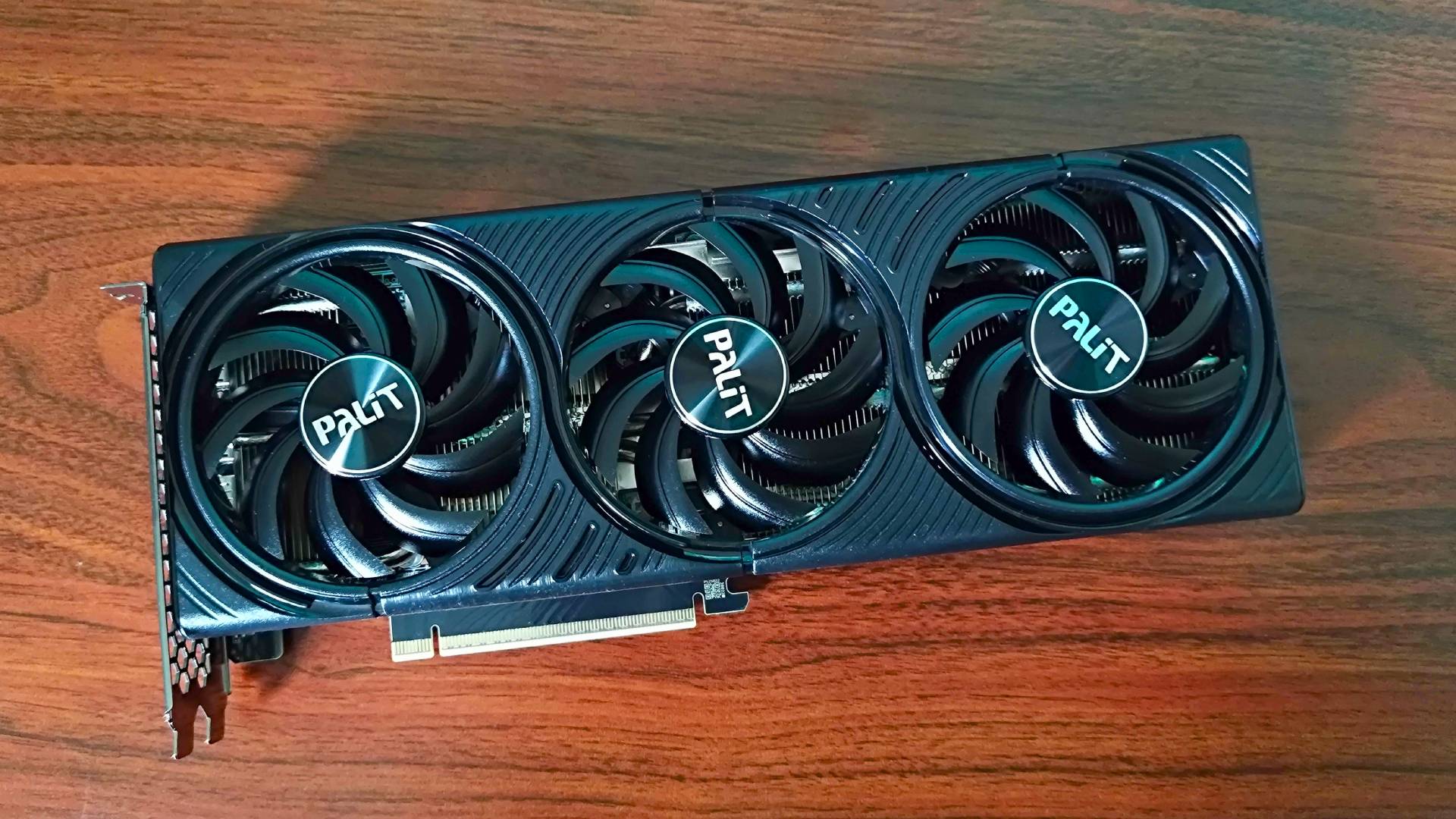
In the absence of a Founders Edition, it’s up to AIB partners to cook up appropriate RTX 5060 designs. Palit's take on the new Nvidia GPU directly targets players looking for a small form factor card that avoids skimping on cooling, but the result is something that’s still longer than the Nvidia GeForce RTX 5070.
I’m noticing a trend with card designs this generation, and Nvidia is making brands look a little silly, albeit unintentionally. The main issue is that even powerhouse GPUs like the GeForce RTX 5080 Founders Edition are pretty compact thanks to a new split PCB approach, but AIB partners are still largely using the same shrouds and fans as before.

Palit’s RTX 5060 Ti is still respectably compact, measuring in at 117mm x 292mm, so it’s a nice choice for SFF builds regardless. You also won’t have to wrangle one of those Nvidia 12VHPWR dongles since this model sticks with a good old 8-pin connector. Still, I’m a little sad that all the sleekest cards right now happen to be Founders Edition models that are by and large not available to buy or don’t exist in the first place.
The Palit RTX 5060 Ti wears a fairly minimalist plastic shroud. You’re getting no fancy pants RGB here or anything that could provide cause to aim for a higher MSRP, and honestly? I’d rather every brand followed suit if it meant providing appropriately priced cards. Plus, the GPU is armed with a tri-cooler setup, so thermals, theoretically, shouldn’t remotely be an issue.
Features
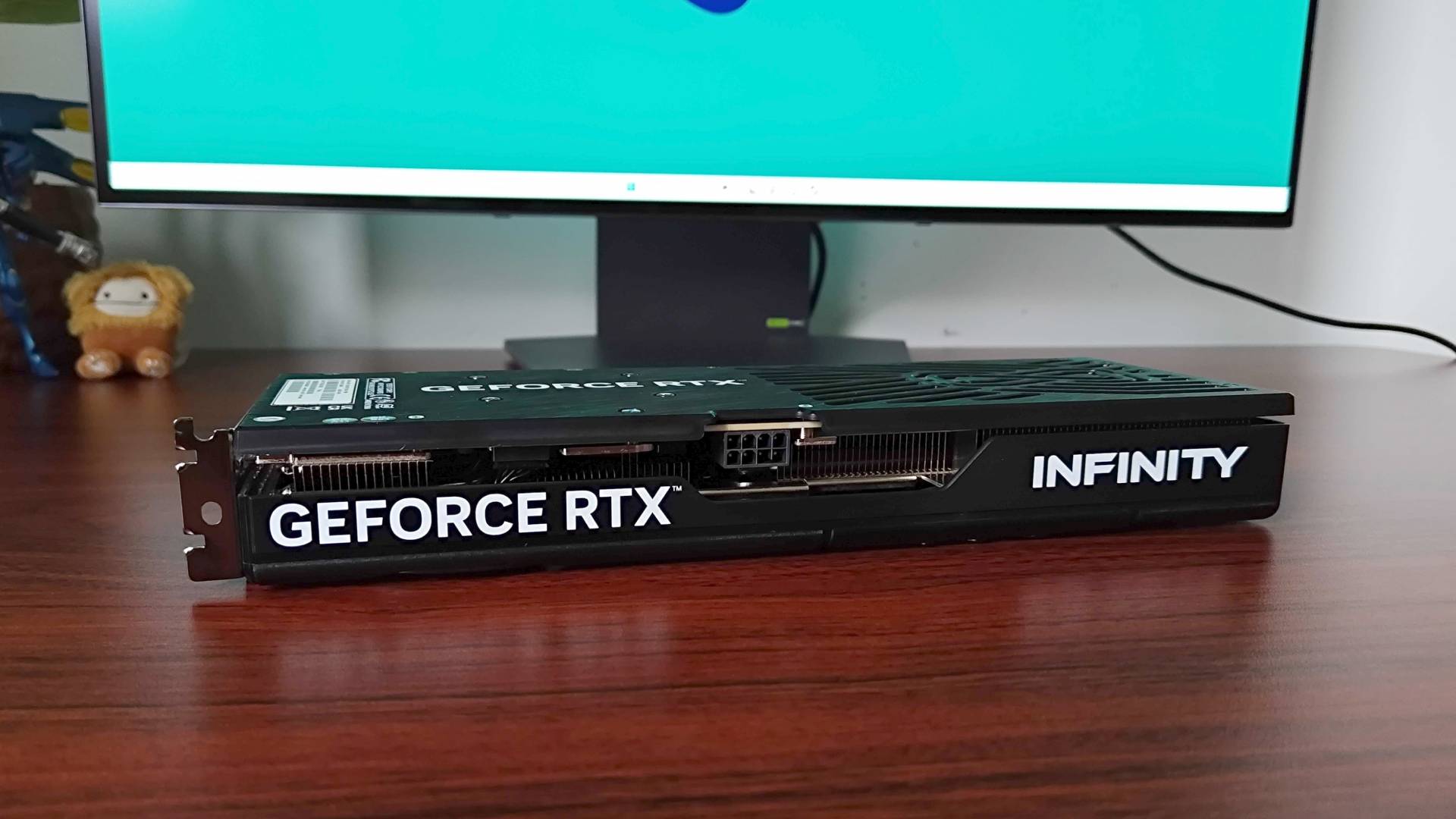
Modern-day graphics cards live and die by their software-based features, and the RTX 5060 Ti benefits from being part of the Blackwell family. By opting for this latest model over something like the older RTX 4060 Ti, you’re getting access to the latest version of Nvidia’s AI upscaling suite. For many players, DLSS 4 will be the main reason to buy a new GeForce GPU since it’ll boost fps via Multi-Frame Generation and dynamic resolution techniques, all while keeping latency low. But there are naysayers out there who’d say such techniques are a faux performance hike – an argument that is growing within enthusiast circles.
I’d personally keep two things in mind when it comes to DLSS 4. The first is that while it’s now compatible with over 75 games, it’s not going to rescue you from low frame rates across your entire Steam library. In Nvidia’s ideal world, every new outing will launch with Multi-Frame Generation support that will effectively fill in the gaps and allow you to hit higher resolutions than before. That could happen, but I don’t want anyone thinking it’ll be there by default to save the day.
My other reservation is that while I do think DLSS 4 and its new Transformer model can predict frames pretty accurately, it’s not flawless. Finer details can still be susceptible to weirdness and end up slightly skewed, and no one can speak for any hiccups that future adventurers could potentially experience with the feature switched on. It could be the case that developers and the tech itself simply get better at mitigating any visual glitches as time goes on, but again, it’s not a guarantee.
Those potential caveats aside, DLSS 4 is going to be a godsend for some entry-level builds. Multi-frame generation can effectively help your rig hit minimum specs for new games and even switch ray tracing on without turning things into a slideshow. The “Multi” part stems from the fact that Blackwell GPUs can generate up to three extra frames for every single natively rendered image, resulting in an fps boost.
Normally, this would come with a latency risk, but Nvidia Reflex is on hand to combat any lag in conjunction with upscaling techniques. There is a new version on the way that’s going to help make playing even competitive shooters on the fastest gaming monitors possible with fewer caveats, but I’ll have to wait for that to land before knowing how much it’ll benefit cards like the RTX 5060 Ti.
Performance
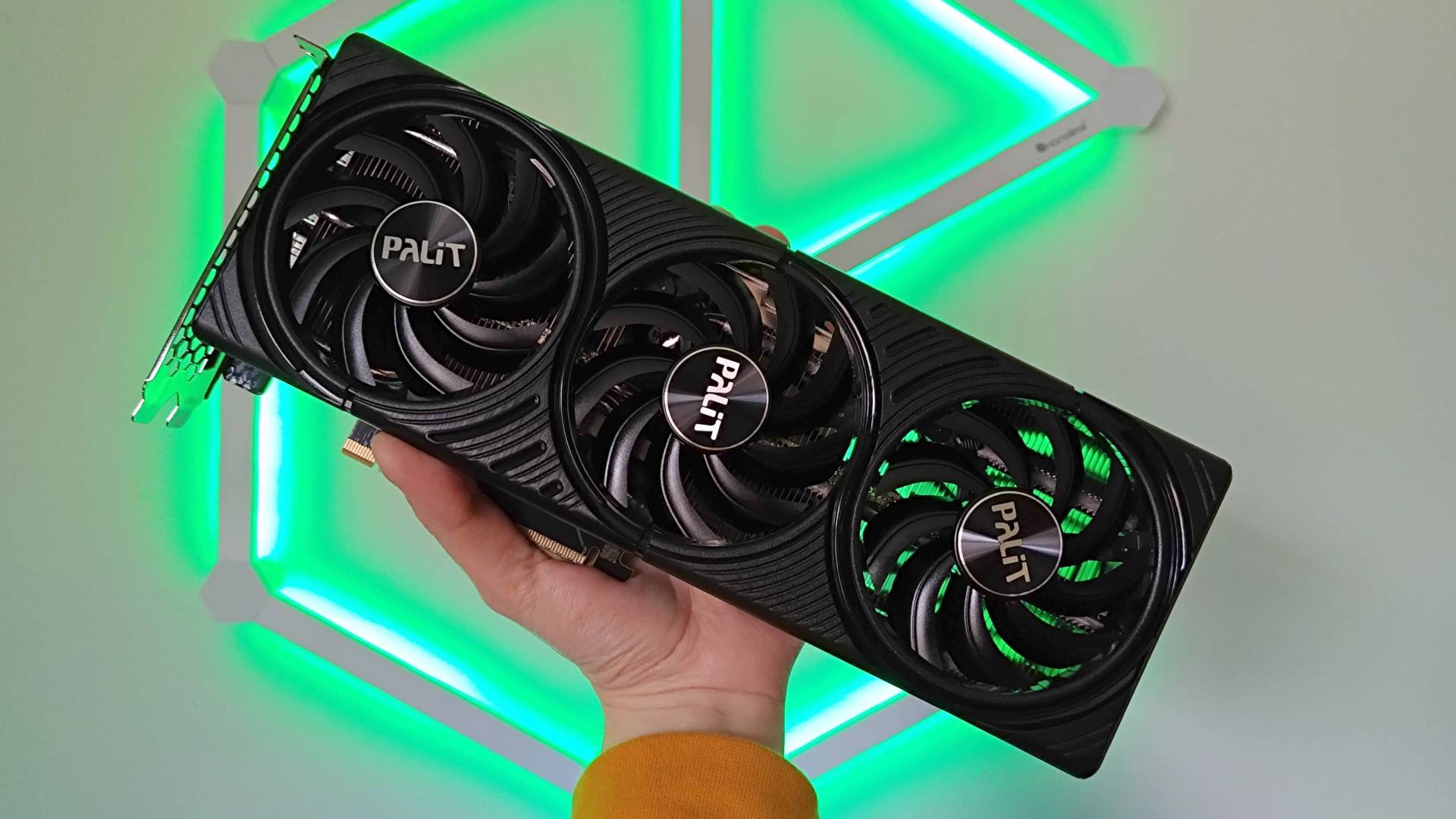
Off the back of a few days of putting the RTX 5060 Ti to work, I can confirm that it will outpace the RTX 4060 Ti without any DLSS backup. Based on my experience with Cyberpunk 2077 alone, you’re looking at a 27% uplift at 1080p, and I was pretty impressed by the jump from 104fps to an 185fps average in Hitman 3 with ultra settings applied.
Nvidia’s claim of “over 100fps” largely holds up, and even Marvel Rivals managed to clear the bar by hitting a 107fps average. Naturally, enabling ray tracing makes all the difference, as the effects will knock your Night City trip down to around 52fps, while Hitman 3 just about manages an even 60. I wouldn’t really advise messing with fancy lighting unless you’re either into dialling back other settings or making use of DLSS 4, and if you’re comfortable with doing the latter, it will provide you with pretty lofty frame rates.
To keep things consistent with my other GPU benchmarks, I set DLSS 4 Multi Frame Generation to x4 where available and Super Sampling to “balanced” while testing the RTX 5060 Ti. By doing so, I was able to get Cyberpunk 2077 to run at 186fps at 1440p with ray tracing enabled. Not remotely shabby, seeing as I could have played around with a few settings and probably optimized things to hit around 240Hz, matching higher premium gaming monitor refresh rates.
Multi-Frame Generation really saves Hitman 3 at 1440p with ray tracing on too, ramping things up from a measly 39fps to 195fps. DLSS also came in handy when playing Marvel Rivals since it cranks up QHD frames from 75fps to 227fps, and while I’d perhaps leave it off if I was playing competitively, I couldn’t smell any latency issues during casual matches.
On that note, I play Overwatch 2 competitively fairly regularly, and if you do too, I can confirm the RTX 5060 Ti has the chops to hit 600fps with 1080p low settings enabled. That’s perhaps not a shocker since it’s not that demanding to run, but I always make a point of seeing if a card can keep up with my preferred specs. FYI, that’s without DLSS involved, and if you’re confident Reflex can prevent things feeling a little funny when upscaling, you could probably bump settings a bit or try 1440p.
If it’s a 4K experience you’re after, you should probably start with the RTX 5070. That said, the gap isn’t as wide as you might think between that $549 GPU and the RTX 5060 Ti. The new 60-class card can hit 34fps in Cyberpunk 2077 without DLSS on, which doesn’t feel worlds apart from the 5070’s 48fps average. Plus, if you actually make use of Multi-Frame Generation and switch ray tracing on, you’re going to be hitting around 124fps, and while the 70-class model can touch 160fps, the difference might not be worth $120 to every player.
On the temperature side of things, you won't remotely have to worry about things getting toasty when using the Palit model specifically. That triple setup kept things largely under 60°c / 140° Fahrenheit a majority of the time, and the highest I could get it to hit under full load was around 72°c / 161.6° Fahrenheit. I can't speak for other brands, but this Infinity model should keep nice and icy in most scenarios, which gives it a better chance running all those demanding games yet to come.
Should you buy the Nvidia GeForce RTX 5060 Ti
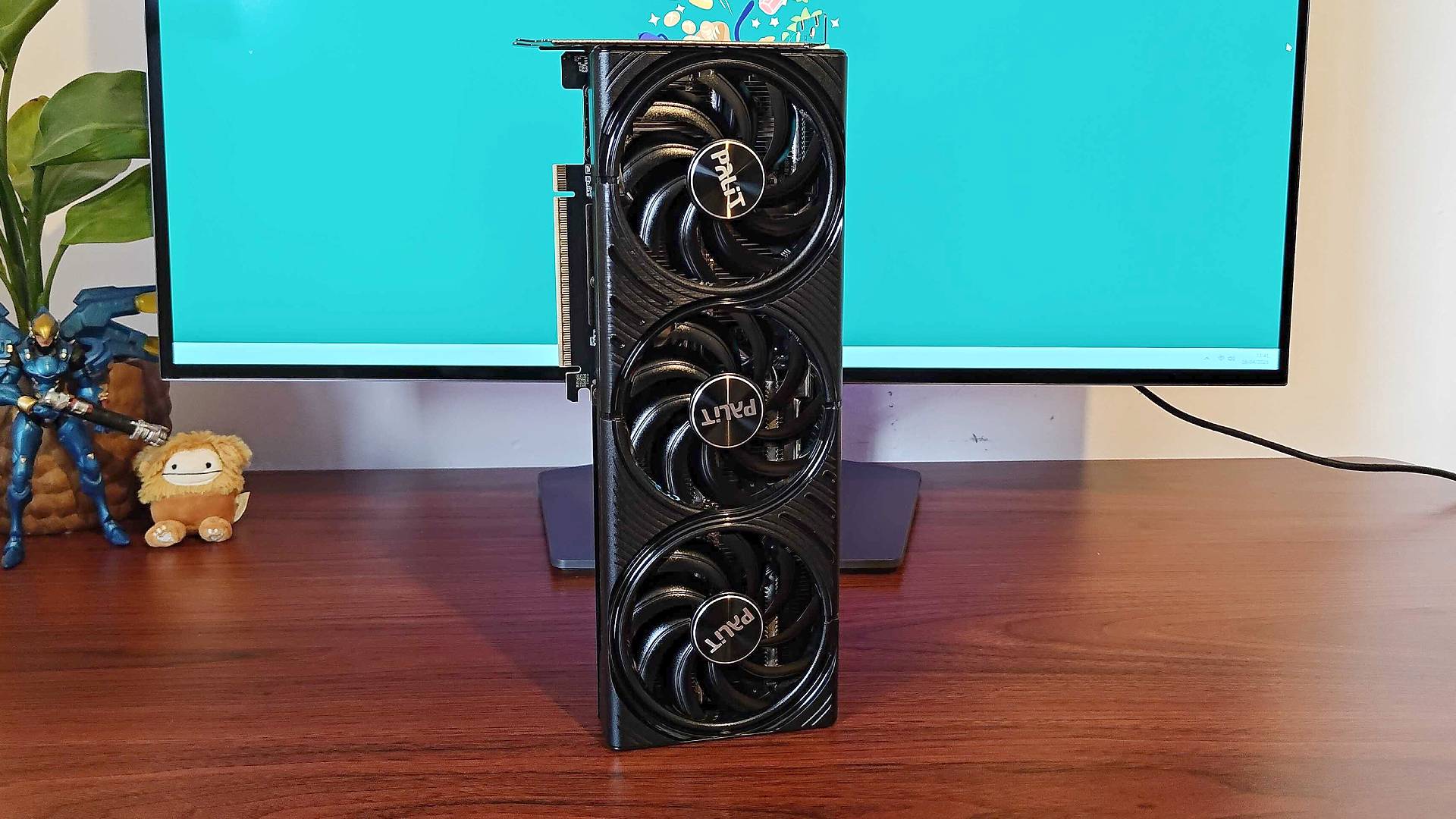
Instinctively, I feel like most players shouldn’t buy the RTX 5060 Ti, but not because it’s a bad GPU. The first 60-class Blackwell graphics card provides a nice performance uplift compared to the 4060 Ti, and those DLSS 4 abilities are there for those who want an easy frame rate boost. Ultimately, it’s a decent GPU that has arrived at a bad time, and its success will hinge on both availability and third-party pricing.
If you’re rocking a 1080p or QHD setup, and you’re not planning on aiming for 4K anytime soon, the RTX 5060 Ti will cater to your needs. Just like last generation, ray tracing is a bit of a stretch with other settings at ultra, but this is the first 60-series GPU I’ve tested that could provide technically playable results at 1440p without relying on AI upscaling.
My main concern is that if there aren’t RTX 5060 Ti models available consistently at Nvidia’s MSRP, the GPU risks losing any value incentive. Sure, it might be able to pull off some nice 4K tricks using Multi-Frame Generation, but I’d never dream of telling you to pick one up if it ends up only available for over $500. That’s the RTX 5070 and RX 9070’s territory, and vendors have no business pricing up cards in that manner.
Even if the RTX 5060 Ti 16GB is freely available at $429, deciding whether it’s the right GPU is going to be tricky. The 8GB version will naturally be less futureproof since future PC outings could munch more memory, but I’d argue that if you’re going to stress out the card with higher resolutions, you’ll likely end up using DLSS anyway, which cuts back significantly on VRAM usage. Does that mean you’d be better off spending $379 on the base version? Perhaps, but only if the RTX 5060 doesn’t swoop in with surprising performance next month for $80 less.
Here’s the TLDR – I’d hold off on picking up any new-gen models for now unless you absolutely need a new graphics card. That includes the RTX 5060 Ti, but if your GPU suddenly dies on you this year or you’re able to say “one banana” in between frames when playing newly released adventures, this 60-series card will help you easily run everything at 1440p for under $450 (if it can stay at that MSRP).
How I tested the Nvidia GeForce RTX 5060 Ti
For a week, I used the RTX 5060 Ti within my main PC to both casually play games and run benchmarks. During that time, I used Cyberpunk 2077, Hitman 3, Total War: Warhammer 3, and Marvel Rivals specifically to measure average frame rates at 1080p, 1440p, and 4K, while also assessing general performance with DLSS 4 AI upscaling on and off. In addition, I also took note of factors like peak temperatures and design elements so as to compare the card to rivals and other models within its price range.
For more information on how we test graphics cards, swing by our full GamesRadar+ hardware policy.







